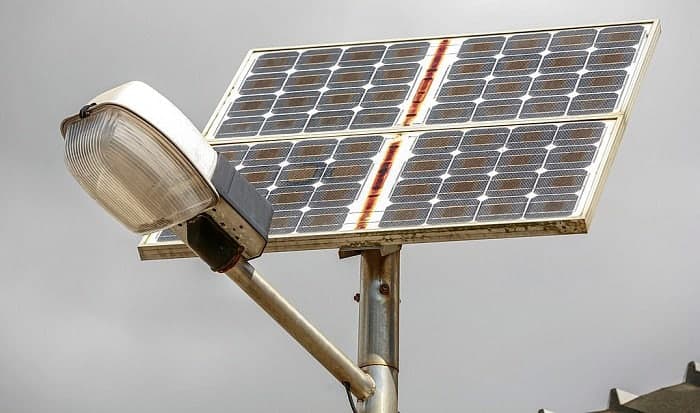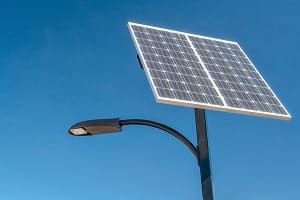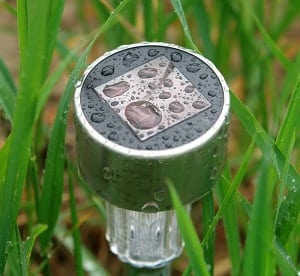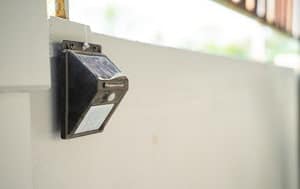There’s no doubt about how practical and cost-efficient solar lighting systems are. It’s good to know that we do not have to ultimately depend on electricity all the time since we can also resort to effective solutions from nature. Nonetheless, regardless of how practical solar lighting devices are, it is inevitable to encounter some common problems.
One of the questions that you might want to answer is how to fix outdoor solar lights that stop working. Solar lighting products are economic instruments to light up your place, so it would be a waste if you just leave them unrepaired. Read the rest of this post for some step-by-step guides.
Table of Contents
- What Should You Do When Your Solar-Powered Lights Stop Working
- Here are the Steps to Consider When Outdoor Solar Lights Stop Working
- Cover the Solar Panel
- Readjust the Batteries (Replace if needed)
- Keep the Solar Panels Away from Shady Locations
- Know the Proper Angle
- Make Sure the Solar Panel is Facing the South
- Inspect Issues Brought About by Water
- Restart the Solar Lighting System
- Dustproof your Solar Panel
- Avoid Charging Near Glasses
- Check the Lux Sensor
- Conclusion
What Should You Do When Your Solar-Powered Lights Stop Working
Here are the Steps to Consider When Outdoor Solar Lights Stop Working
Cover the Solar Panel
Making a shield around the fixture’s solar panel will serve as a trick. This is because doing so will distract the outdoor solar lights into thinking it is already night time.
Solar-powered fixtures save the power they obtain from the sun all day long. Furthermore, they commonly don’t illuminate during daylight since the energy is stored in the batteries for use at dusk.
Hence, if you make a shield around the solar panel, the solar fixtures might begin operating if there isn’t any light source reaching the panels.
Readjust the Batteries (Replace if needed)
Solar lights are generally equipped with rechargeable batteries that usually last up to 2 years or more.
So, if the batteries have some issues with their charging capability, this may cause the solar fixtures not to work. This is why it is essential to double-check them. If the batteries were already readjusted but still no luck, it might be time to replace the batteries.
Keep the Solar Panels Away from Shady Locations
Anything that hinders ample sunlight exposure can significantly affect the way the solar panels absorb sunlight. As you might already know, a sufficient amount of sunlight is especially required for the panels to store adequate energy. If no sufficient energy is stored in the batteries, reduced lighting is expected at night.
Avoid installing solar panels in shady areas. Or, if there is an object that causes shadow or hinders sunlight absorption, consider removing the object or repositioning the solar panel.
Know the Proper Angle
The proper functioning of outdoor solar lights largely depends on solar panel adjustment. Weather conditions can remarkably affect charging efficiency. So, if it is cloudy, foggy, or rainy, the sun is barely seen, particularly in winter.
Due to this, it is best if you consider adjusting your solar panels to a 45-degree angle. It would take in more solar energy than it would in other positions.
Make Sure the Solar Panel is Facing the South
Did you know that a solar panel would be at its most generative state if it faces the south? If it is positioned on the south side, the solar panel would obtain complete sunlight coverage from daytime until twilight.
Inspect Issues Brought About by Water
This issue is not quite usual. Nevertheless, if this ever emerges, the first thing you should do is to get rid of any form of liquid near the solar panel. Be sure to keep it under a hot temperature so that the moisture will instantly dry off.
Moreover, it is essential to ensure that the batteries are not affected; replace them if necessary. The outdoor solar lights should start working again after a day or two of charging.
Restart the Solar Lighting System
Restart the device using the normal on and off switch. This typically works 90% of the time.
Sometimes, solar lights merely need resetting. There is a great likelihood that the solar lighting device will go back to its normal functions after a reset.
Dustproof your Solar Panel
If you reside in a prone-to-dust location, like main roads, this could pose a problem to the solar panels. This is why the solar panels need to be dustproof so that the dirt accumulated won’t hamper their performance.
Alternatively, you may consider wiping off the dust, dirt, or other residues regularly. It is critical to ensure that the solar lighting device is neat and in proper condition.
Avoid Charging Near Glasses
Did you know that solar panels won’t work well when placed near glasses, even if they are triple or double-layered?
Hence, if your panel is positioned near glasses, this might be the reason why your solar light is not working as it should. In this case, it is strongly suggested to change the location where your panels are installed immediately.
Check the Lux Sensor
The lux sensor discerns how dusky it needs to be for the outdoor solar fixtures to get active. See if the sensor still functions.
In addition, if there’s any light source which the panel can sense, the device might still think that there is illumination outside. Hence, it’s possible your light stayed off because there was another light source you didn’t know about.
Fundamentally, these ten outdoor solar light repair tips can probably get your solar fixtures back in working conditions. Keep in mind that solar fixtures not working is a pretty common issue for most homeowners.
Please note that if your solar light is still not functioning after following these guides, you might want to contact the manufacturer directly. You likely won’t have any difficulty getting a replacement if the warranty isn’t expired.
Conclusion
Many homeowners quickly get frustrated whenever they encounter some problems with the way their outdoor solar-powered lights work. Fortunately, there are some tried and tested steps on how to fix outdoor solar lights that stopped working.
So, before you throw your solar lights away, consider going through the provided steps shared above and discover for yourself what’s missing or lacking. Hopefully, by following these steps, you can start using your solar lighting systems with satisfaction again.

I am Kathleen Miller, staff writer and reviewer of the Avasolar team. Working with the team has been a pleasure for me so far, I hope to bring readers useful information by creating detailed and easy-to-follow contents.






